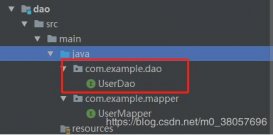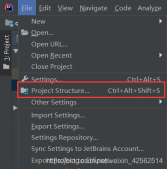项目需要对接外部接口,将图片文件流发送到外部接口,下面代码就是HttpsURLConnection如何上传文件流:
|
1
2
3
4
5
6
7
8
9
10
11
12
13
14
15
16
17
18
19
20
21
22
23
24
25
26
27
28
29
30
31
32
33
34
35
36
37
38
39
40
41
42
43
44
45
46
47
48
49
50
51
52
53
54
55
56
57
58
59
60
61
62
63
64
65
66
67
68
69
70
71
|
/** * HttpsURLConnection上传文件流 * * @param args * @throws Exception */ public static void main(String[] args) throws Exception { //本地图片 java.io.File file = new java.io.File("/Users/jikukalun/Pictures/id1.jpg"); FileInputStream fileInputStream = new FileInputStream(file); //对接外部接口 String urlString = "************"; URL url = new URL(urlString); HttpsURLConnection con = (HttpsURLConnection) url.openConnection(); // 设置是否向httpUrlConnection输出,因为这个是post请求,参数要放在 // http正文内,因此需要设为true, 默认情况下是false; con.setDoOutput(true); // 设置是否从httpUrlConnection读入,默认情况下是true; con.setDoInput(true); // 设定请求的方法为"POST",默认是GET con.setRequestMethod("POST"); // Post 请求不能使用缓存 con.setUseCaches(false); // 设定传送的内容类型是可序列化的java对象 // (如果不设此项,在传送序列化对象时,当WEB服务默认的不是这种类型时可能抛java.io.EOFException)// con.setRequestProperty("Content-type", "application/x-java-serialized-object"); OutputStream out = con.getOutputStream(); //读取本地图片文件流 FileInputStream inputStream = new FileInputStream(file); byte[] data = new byte[2048]; int len = 0; int sum = 0; while ((len = inputStream.read(data)) != -1) { //将读取到的本地文件流读取到HttpsURLConnection,进行上传 out.write(data, 0, len); sum = len + sum; } System.out.println("上传图片大小为:" + sum); out.flush(); inputStream.close(); out.close(); int code = con.getResponseCode(); //获取post请求返回状态 System.out.println("code=" + code + " url=" + url); if (code == 200) { InputStream inputStream2 = con.getInputStream(); ByteArrayOutputStream bos = new ByteArrayOutputStream(); while ((len = inputStream2.read(data)) != -1) { bos.write(data, 0, len); } inputStream2.close(); String content = bos.toString(); bos.close(); System.out.println("result =" + content); //将返回的json格式的字符串转化为json对象 JSONObject json = JSONObject.parseObject(content); try { System.out.println("name=" + json.getString("name") + ", people=" + json.getString("people") + ", sex=" + json.getString("sex") + ", id_number=" + json.getString("id_number") + ", type=" + json.getString("type") + ", address=" + json.getString("address") + ", birthday=" + json.getString("birthday")); } catch (JSONException e) { e.printStackTrace(); } } //断开HttpsURLConnection连接 con.disconnect(); } |
引用jar包:
|
1
2
3
4
5
6
7
|
import com.alibaba.fastjson.JSONException;import com.alibaba.fastjson.JSONObject;import javax.net.ssl.HttpsURLConnection;import java.io.*;import java.net.HttpURLConnection;import java.net.MalformedURLException;import java.net.URL; |
以上这篇HttpsURLConnection上传文件流(实例讲解)就是小编分享给大家的全部内容了,希望能给大家一个参考,也希望大家多多支持服务器之家。















